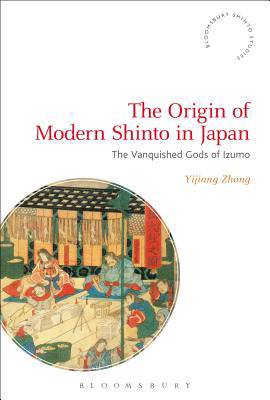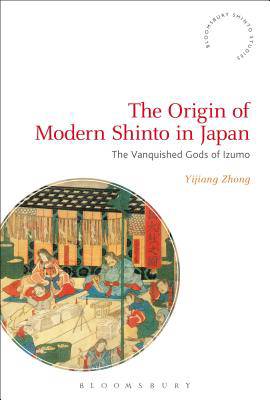
Je cadeautjes zeker op tijd in huis hebben voor de feestdagen? Kom langs in onze winkels en vind het perfecte geschenk!
- Afhalen na 1 uur in een winkel met voorraad
- Gratis thuislevering in België vanaf € 30
- Ruim aanbod met 7 miljoen producten
Je cadeautjes zeker op tijd in huis hebben voor de feestdagen? Kom langs in onze winkels en vind het perfecte geschenk!
- Afhalen na 1 uur in een winkel met voorraad
- Gratis thuislevering in België vanaf € 30
- Ruim aanbod met 7 miljoen producten
Zoeken
€ 81,45
+ 162 punten
Uitvoering
Omschrijving
Yijiang Zhong analyses the formation of Shinto as a complex and diverse religious tradition in early modern and Meiji Japan, 1600-1868. Highlighting the role of the god Okuninushi and the mythology centered on the Izumo Shrine in western Japan as part of this process, he shows how and why this god came to be ignored in State Shinto in the modern period.
In doing so, Zhong moves away from the traditional understanding of Shinto history as something completely internal to the nation of Japan, and instead situates the formation of Shinto within a larger geopolitical context involving intellectual and political developments in the East Asian region and the role of western colonial expansion.
The Origin of Modern Shinto in Japan draws extensively on primary source materials in Japan, many of which were only made available to the public less than a decade ago and have not yet been studied. Source materials analysed include shrine records and object materials, contemporary written texts, official materials from the national and provincial levels, and a broad range of visual sources based on contemporary prints, drawings, photographs and material culture.
In doing so, Zhong moves away from the traditional understanding of Shinto history as something completely internal to the nation of Japan, and instead situates the formation of Shinto within a larger geopolitical context involving intellectual and political developments in the East Asian region and the role of western colonial expansion.
The Origin of Modern Shinto in Japan draws extensively on primary source materials in Japan, many of which were only made available to the public less than a decade ago and have not yet been studied. Source materials analysed include shrine records and object materials, contemporary written texts, official materials from the national and provincial levels, and a broad range of visual sources based on contemporary prints, drawings, photographs and material culture.
Specificaties
Betrokkenen
- Auteur(s):
- Uitgeverij:
Inhoud
- Aantal bladzijden:
- 272
- Taal:
- Engels
- Reeks:
Eigenschappen
- Productcode (EAN):
- 9781350066540
- Verschijningsdatum:
- 19/04/2018
- Uitvoering:
- Paperback
- Formaat:
- Trade paperback (VS)
- Afmetingen:
- 156 mm x 234 mm
- Gewicht:
- 385 g

Alleen bij Standaard Boekhandel
+ 162 punten op je klantenkaart van Standaard Boekhandel
Beoordelingen
We publiceren alleen reviews die voldoen aan de voorwaarden voor reviews. Bekijk onze voorwaarden voor reviews.









